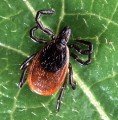It's almost summer now
It's almost summer now

How much water do you have to drink?
In this activity student develop formulas for calculating their water needs, learn about the effects of too little water, and calculate what they should be consuming. 4.OA.B, 5.OA.B, 6.NS.B, 6.RP.A, 8.F.A, HSF.BF, HSA.CED, HSM

How much pee is in this pool? Updated!
A Canadian chemist, Xing-Fang Li, has found a marker for urine that chlorine doesn't disguise. In this activity, students calculate volume of several pools, change that cubic foot volume to gallons of pool water, and try to approximate how much urine is in each pool. 4.MD.C, 5.MD, 6.G.A, 6.RP.A, 7.RP.A, 7.G.B
Note: Only exclusive to Adventurer (paid) members.
At the amusement park, our friend, Jason, was intrigued with this sign for drink deals. He and his family come often to the park and, during the summer when it is hot, naturally drink a lot. Which is the best deal for them? 7.NS.3, 7.EE.3, 7.EE.4, 8.F.2, 8.F.5, HSA.CED.A.2, HSA.REI.D, HSA.REI.C.6, MP1, MP4
With the start of summer and wonderful outdoor activities, it might be good to examine the growth of Lyme disease and to recognize its carrier, the deer tick. Hopefully this math activity will alert your students to the care that should be taken when outdoors. With Excel graphing or graphing by hand, use our data from the CDC to find the growth of Lyme in your state and engage in hypothesizing why that growth or decline might be occurring. 5.MD, 6.SP, 7.RP, 7.SP



